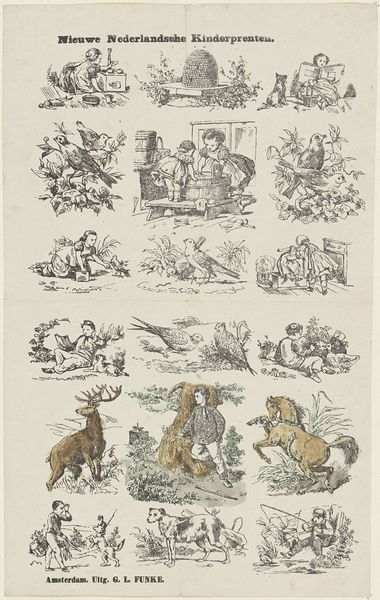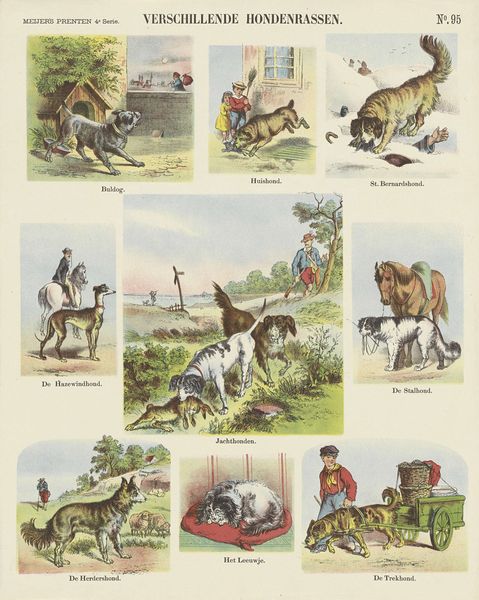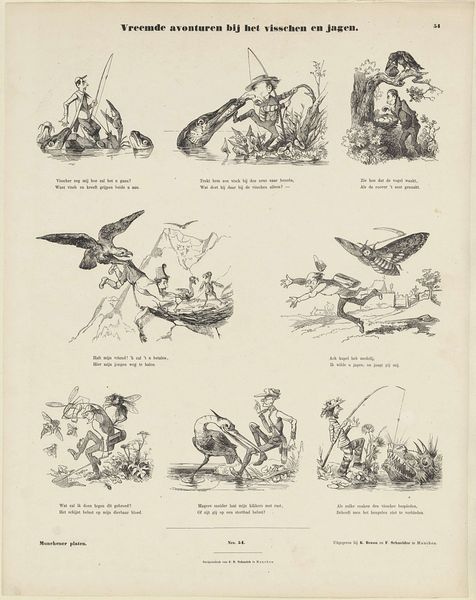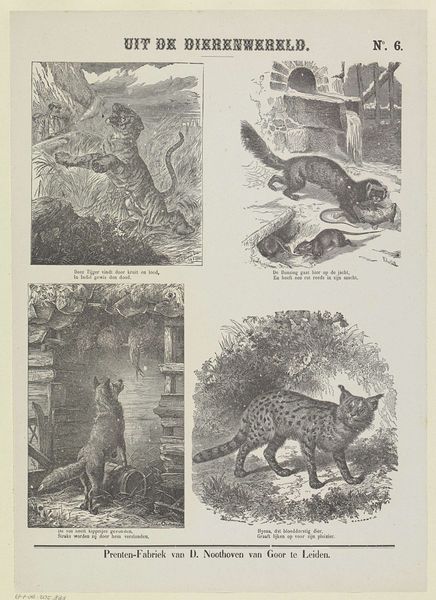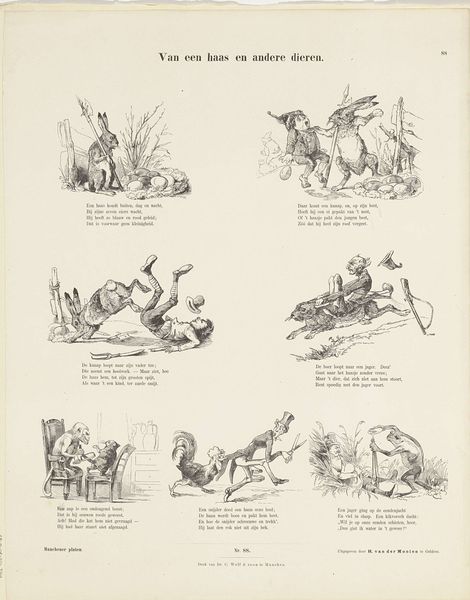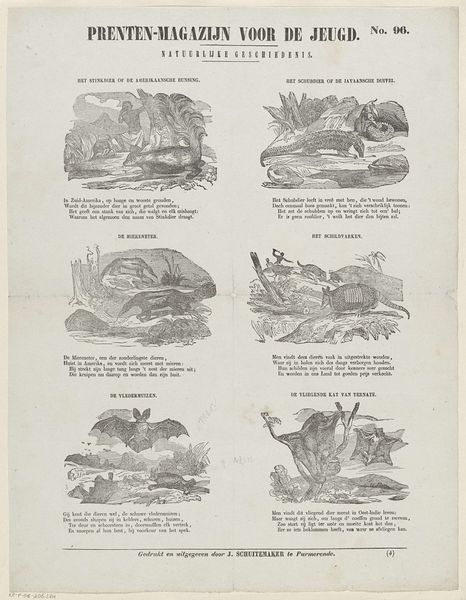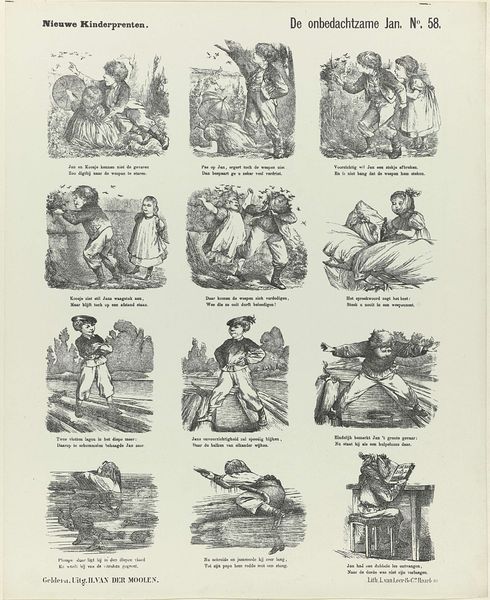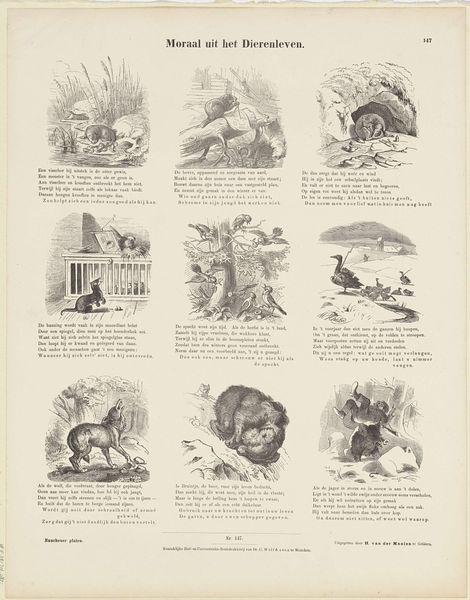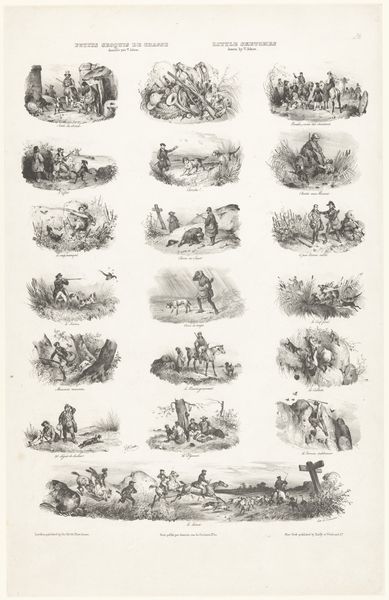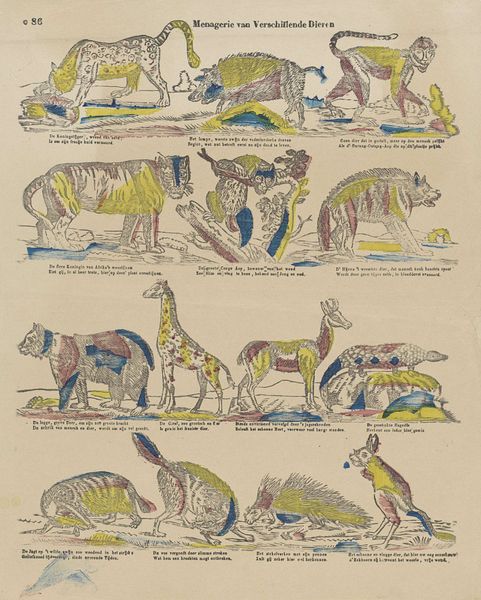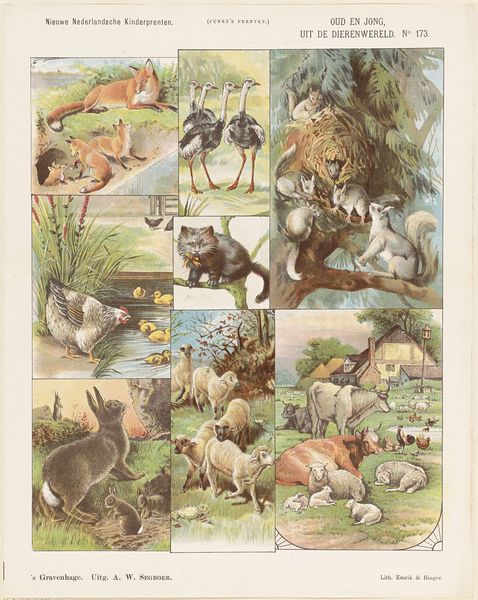
drawing, print, paper, ink
#
drawing
# print
#
dog
#
paper
#
ink
#
genre-painting
#
realism
Dimensions: height 431 mm, width 344 mm
Copyright: Rijks Museum: Open Domain
Editor: Here we have "Verschillende Hondenrassen," or "Different Dog Breeds," a drawing or print from between 1838 and 1892 by Hermann van der Moolen. The composition is so interesting—almost like a field guide to dogs. What stands out to you in this work? Curator: The image resonates with a fascinating exploration of social order and the human-animal bond through breeds as visual signifiers. Each vignette of a dog is not just a portrait, but a cultural marker, suggesting different roles and values attached to each breed in 19th-century society. Editor: So the breeds themselves become symbolic? Curator: Precisely. Think about it: The hunting dogs embody the active, masculine pursuits; the sleeping dog evokes domestic comfort and loyalty. This categorization speaks volumes about societal expectations and the varying relationships people had with animals, turning a seemingly simple illustration into a complex web of symbolic meaning. Look at the Saint Bernard, does it remind you of something? Editor: Is that a reference to the famous tales of Alpine rescue? It definitely puts that breed in a heroic light. Curator: Exactly! Van der Moolen masterfully uses these visual shortcuts. He doesn’t just show us dogs; he evokes an entire narrative and cultural understanding linked to each breed. It makes you consider how animals are visually constructed, reinforcing human projections and biases over time. Editor: It's amazing how much meaning can be packed into what seems like a straightforward print. I will certainly not be looking at dog breeds in the same light going forward! Curator: Indeed! It prompts reflection on how cultural memory is encoded within visual symbols. There's always more than meets the eye.
Comments
No comments
Be the first to comment and join the conversation on the ultimate creative platform.

